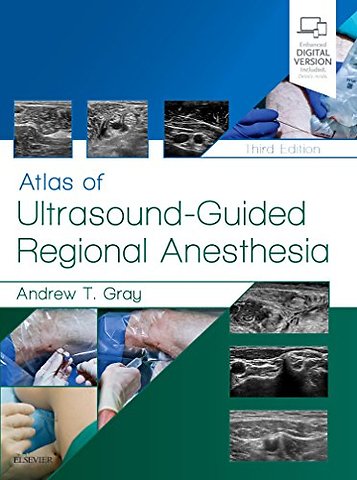Atlas of Ultrasound-Guided Regional Anesthesia
Samenvatting
Step-by-step videos and images, board-style review questions, and coverage of new blocks make this highly respected title a must-have reference for clinical practice. Written by Andrew T. Gray, MD, PhD, one of the pioneers of the use of ultrasound to guide needle placement, Atlas of Ultrasound-Guided Regional Anesthesia, 3rd Edition, shows you how to safely and effectively use the latest methods and applications of this technique. Board-style review questions found on the Expert Consult eBook version test your knowledge and help you prepare for the ABA exam. Helps ensure correct needle placement with numerous 3-D and long-axis views that clearly depict surrounding structures. Includes coverage of 11 new blocks: Adductor Canal, Posterior Femoral Cutaneous, Pectoral, Quadratus Lumborum, Pudendal, Paravertebral, Transversus thoracis, Supraorbital, Transtracheal, Greater Occipital and Lesser Occipital.
Features access to 20 author-narrated videos showing proper placement of needles using ultrasound guidance, including 11 new videos: Forearm (ulnar, median and radial), Ankle (tibial, saphenous, superficial peroneal, deep peroneal, sural), Paravertebral, Adductor Canal, and Catheters.
Presents several new chapters, including Regional Anesthesia in Resource-Constrained Environments and Safety of Ultrasound Guided Regional Blocks.
Expert Consult™ eBook version included with purchase. This enhanced eBook experience allows you to search all of the text, figures, and references from the book on a variety of devices.

